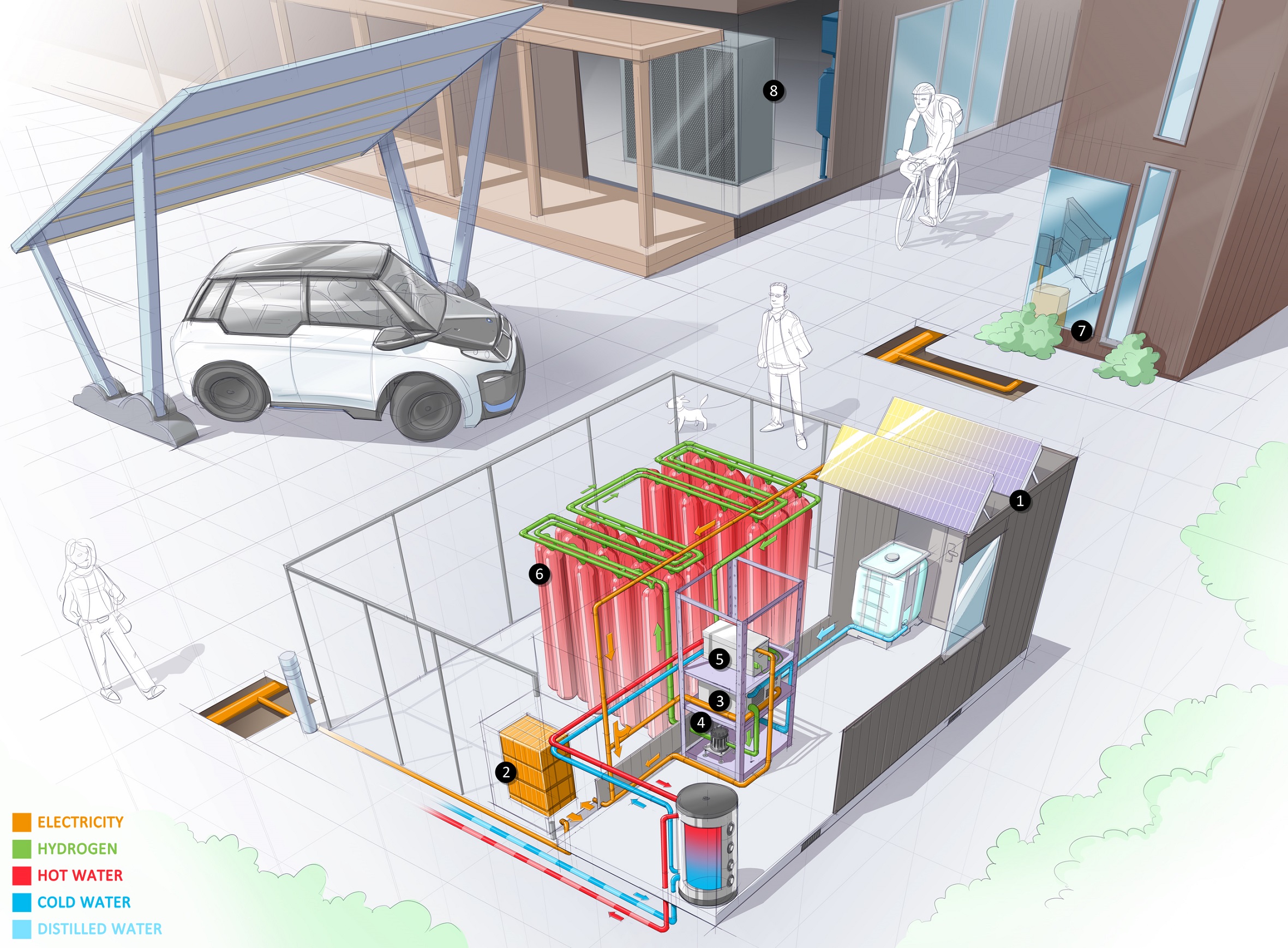24/7 Energy Lab: local, autonomous and CO2 free
At present, households account for 20% of the Netherlands’ energy consumption. Reason enough for the 24/7 project at The Green Village to work on a local, CO2-neutral energy system for the built environment.
In the south west corner of the premises is a discreet container that contains all the ingredients needed for the generation, conversion and storage of low carbon power: (1) solar panels (6 kWp); (2) a 14 kWh home battery; (3) a 2.4 kW electrolyser that converts electricity into hydrogen; (4) a compressor; and, (5) a 2.3 kW fuel cell. Next to the container are two sets of 27 cylinders (6) for storing 60 kilogram H2 under 300 bar pressure. The 24/7 Energy Lab is scaled to small households (7) that use 2,200 kWh a year. A regulation system with power electronics (8) controls the different components.
“In principle, the control is simple,” explains John Schmitz, former EEMCS Dean and Chair of the Board of The Green Village. “If more solar energy is generated than used, the rest first goes to the battery. If the battery is full, the electricity is converted into hydrogen and stored for the winter. There is little solar energy in the winter, but a fuel cell supplies both heat and electricity from hydrogen.” The conversion through electrolysis followed by a fuel cell creates a chain efficiency of about 30%. This is not necessarily a bad thing, explains Schmitz. “We scale the PV cells in such a way that there is a surplus of power in summer that we can then use to produce hydrogen.”
The 24/7 Energy Lab is at the interface of three energy streams: fuel, electricity and heat. This makes a well functioning Energy Management System (EMS) a complex unit. It was developed by the Intelligent Electrical Power Grids Research Group and the Flexinet project (both at the Faculty of EEMCS). The intention is that there is an open source design of an EMS that includes the required communication protocols.
Energy independence is not the 24/7 Energy Lab’s goal, says Schmitz. What can happen is that distributed energy generation for local use could reduce the pressure on the electricity grid. This would be very welcome given the context of more electric vehicles and heating. “The 24/7 Energy Lab will eventually have a residential sustainable energy lab where researchers and students from all the faculties can work with universities of applied sciences and companies,” says Schmitz.
Marjan Kreijns, Director of The Green Village, emphasises that, apart from system integration and smart control, the project is also about non-technical aspects. These includes the economy (how energy is calculated); judicial aspects (permits, liability etc.); and acceptance by residents (who mostly want to avoid hassle). “With 12 real residents in the Field Lab, we see ourselves as a stepping stone between the laboratory and square kilometre scale,” says Kreijns. “Researchers and entrepreneurs can test their prototypes and remove the bugs so that they can scale up to neighbourhood and district level.”
Tech for energy
“I believe that we need to leave a liveable planet behind for future generations and, thus, to my own children and grandchildren. This project is my contribution.” Doing nothing is not an option for John Schmitz. As an alumnus, you too can contribute. A donation to the University Fund Delft will help expand this project and contribute to speeding up the energy transition. See tudelft.nl/techforenergy for more information.
